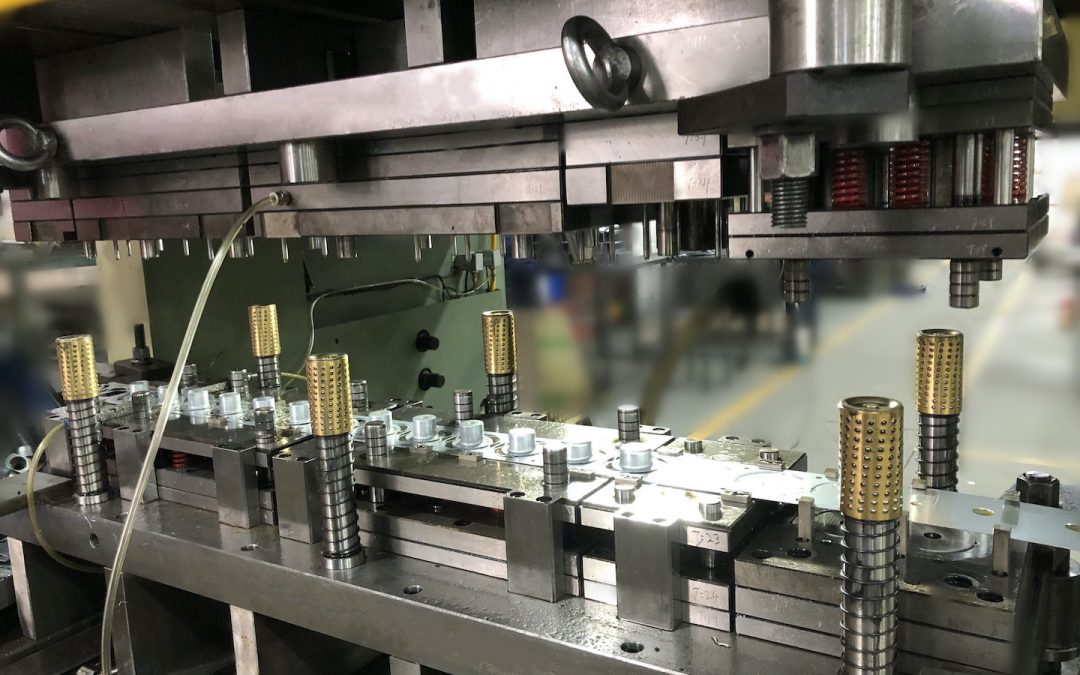The Development of Steel Marking Processes: Technologies and Applications
The world of metal stamping procedures has actually seen a transformative trip noted by constant advancement and adjustment to meet the demands of modern-day industrial practices. The applications cover throughout a range of industries, each benefiting distinctly from the advancements in metal stamping procedures.
Typical Metal Stamping Methods
Standard steel marking techniques have long been the foundation of producing procedures in numerous sectors due to their efficiency and precision. The process includes developing a steel sheet or coil right into a wanted form by pushing it in between a die and a strike. This method is widely used for producing big quantities of get rid of high precision at a fast speed.
Among the crucial benefits of standard steel marking methods is the capability to keep limited resistances, making certain that each component fulfills the called for requirements continually. This degree of accuracy is necessary in markets such as vehicle, aerospace, and electronic devices, where even minor deviations can result in significant issues.
In addition, typical steel marking methods offer cost-effective solutions for mass manufacturing contrasted to other manufacturing methods. The capacity to mark parts in fast sequence reduces production time and lowers labor expenses, making it an appealing option for organizations aiming to enhance their manufacturing procedures.
Emergence of High-Speed Stamping

Among the crucial advantages of high-speed stamping is its capacity to maintain accuracy and consistency even at increased processing rates. This accuracy is important in sectors where tight resistances and intricate styles are called for. Additionally, high-speed stamping permits the processing of a vast array of materials, including light weight aluminum, stainless steel, and copper, additional increasing its applicability throughout various markets.
Furthermore, the development of high-speed marking has actually enabled producers to fulfill the expanding demand for complicated elements in sectors such as automobile, aerospace, and electronic devices (Metal Stamping). By leveraging the rate and precision of high-speed stamping innovation, business can boost their competition in a rapidly developing market landscape
Improvements in Tooling Modern Technology
With the development of high-speed stamping enabling boosted accuracy and effectiveness in metal creating processes, the area of steel stamping has seen significant innovations in tooling modern technology. Tooling innovation plays a vital function in steel marking operations, affecting aspects such as product top quality, manufacturing speed, and total cost-effectiveness.
Moreover, developments in products science have actually caused the creation of tooling products with enhanced durability, put on resistance, and thermal conductivity. By utilizing these innovative materials, tooling manufacturers can create dies and mold and mildews that withstand the high stress and temperatures associated with metal marking procedures, leading to longer device life and enhanced manufacturing efficiency. In addition, innovations my site in device design, such as the use of simulation software and additive manufacturing strategies, have allowed the creation of complicated tooling geometries that were formerly challenging to create. On the whole, these see it here developments in tooling modern technology have transformed the steel stamping sector, enabling makers to achieve higher levels of accuracy, performance, and cost savings.
Combination of Automation in Stamping
As automation remains to improve the landscape of steel marking processes, the combination of automated systems has ended up being progressively prevalent in modern manufacturing facilities. Automated systems offer numerous advantages in steel marking, including enhanced effectiveness, improved accuracy, and enhanced safety and security. By integrating automation into stamping procedures, suppliers can lower cycle times, lessen material waste, and maximize production throughput.
Among the crucial parts of automation in stamping is the usage of robotic arms for jobs such as material handling, part adjustment, go to these guys and quality evaluation (Metal Stamping). These robotic systems can perform repeated and labor-intensive tasks with speed and precision, maximizing human drivers to focus on more intricate operations. In addition, automation enables real-time monitoring and modification of stamping procedures, resulting in greater overall procedure control and quality guarantee
Furthermore, the combination of automation in stamping allows manufacturers to accomplish consistent part top quality, meet limited resistances, and improve total productivity. As innovation proceeds to advancement, the duty of automation in metal stamping procedures is expected to increase even more, driving technology and effectiveness in the production industry.
Applications Across Diverse Industries
Integrating steel stamping processes throughout varied markets showcases the versatility and versatility of this production strategy. From automotive to aerospace, electronic devices to clinical gadgets, steel stamping plays an essential duty in the production of a wide variety of components. In the vehicle industry, metal stamping is used to produce detailed parts such as body panels, chassis parts, and engine parts with high precision and effectiveness. The aerospace sector depends on steel marking for making light-weight yet durable components for aircraft and spacecraft. In the electronics industry, metal stamping is important for creating ports, get in touches with, and other little components with limited resistances. Medical gadget makers make use of steel stamping for producing exact elements like surgical instruments and implants. Additionally, the home appliance industry take advantage of steel marking procedures to produce parts for refrigerators, cleaning makers, and other home appliances. The versatility of metal stamping procedures makes it a valuable production method across various sectors, showing its value in contemporary production procedures.
Final Thought

Comments on “Discover the Latest Technologies in Metal Stamping for Precision Manufacturing”